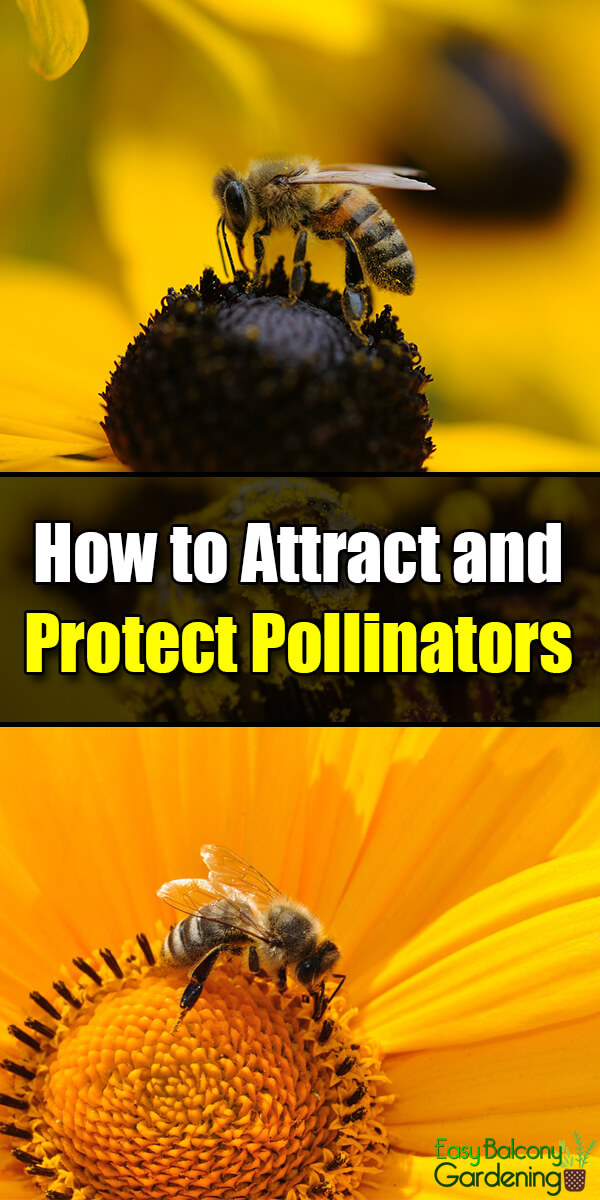Pollinators are very important to successful gardening. They are a blessing and a necessity in nature for the survival of plants and the yield of bounteous crops. Pollinators are plants’ natural allies!
The Process
- Pollinators transfer pollen from a stamen to a pistil that fertilizes the flower.
- Pollen attaches itself to most successful pollinators, making the pollen mobile.
- The pollen moves to other parts of the flower or to another flower as the pollinator travels around the garden.
- After the pollen attaches itself to the stigma on the new plant, it forms a pollen tube. The pollen tube then grows down through the style of the flower towards the ovule, through which the sperm cell travels.
- Once the pollen tube reaches the ovule, fertilization between a sperm cell and an egg can occur.
Wind
Wind is also a pollinator as it can also transfer pollen. However, this process provides only a small hope of landing on a receptive flower stigma of the correct species. There is consequently a very real need for helpful creatures as pollinators. Not only is their process of pollination a very course of nature, but it provides us visual and fruitful enjoyment.
Natural Pollinators
The vast majority of pollinators are flying insects, namely honeybees, wasps, butterflies, moths, beetles, flies, perching birds, hummingbirds, fruit bats, mice, ants. Some lizards such the gecko can also be pollinators. Most wild bees in the United States are some of the most effective insect pollinators. There are approximately 4,000 species of wild bees in the United States. Hummingbirds are the best-known wildlife pollinators in the Americas.
Inviting Natural Pollinators
If you want a successful garden, invite the pollinators. You can make your garden more enticing.
- You can install a bird feeder and a water feature such as a birdbath, and plant specific vegetation that attract such pollinators. With bird feeders, make sure you fill it with the kind of food that attracts the type of birds that you would like in your garden.
- With a water feature such as a birdbath, fill it minimally for easier access. You should place a birdbath at least three feet from the ground to reduce the risk of predators.
- To keep the birdbath clean and to prevent mosquito-breeding grounds, scrub out the bath once a week.
- An easy way to create a cheap water feature is by filling a shallow basin and just placing it on a boulder, or a stump, in or near your garden.
Pollinator Attracting Foliage
- To attract birds, choose flowers with yellow, orange, or red stamen or corollas. Since birds do not have a well-developed sense of smell, the plants may have unscented flowers.
- To entice small animals, plant brown or white species. Select those with sturdy stalks to withstand the animals’ weight.
- To invite insects, plant flowers with bright colors and nectar guides. Some good examples are sunflowers, daisies, asters, apple trees, and bee balm.
- A good rule of thumb to keep pollinators in your garden is to plant sequentially flowering plants so that they have a food source all year long.
Protect Your Pollinators
It is your duty to protect your pollinators. Keep them safe by using less or no pesticides at all. The use of other plants such as marigolds/lavender, and basil to ward off harmful bugs are a great alternative in protecting pollinators. Think organic gardening as well. A large number of pesticides used in agriculture are toxic to pollinating insects and animals.
Recap
Invite pollinators into your garden, keep them safe, and enjoy the fruits of a flourishing garden!








